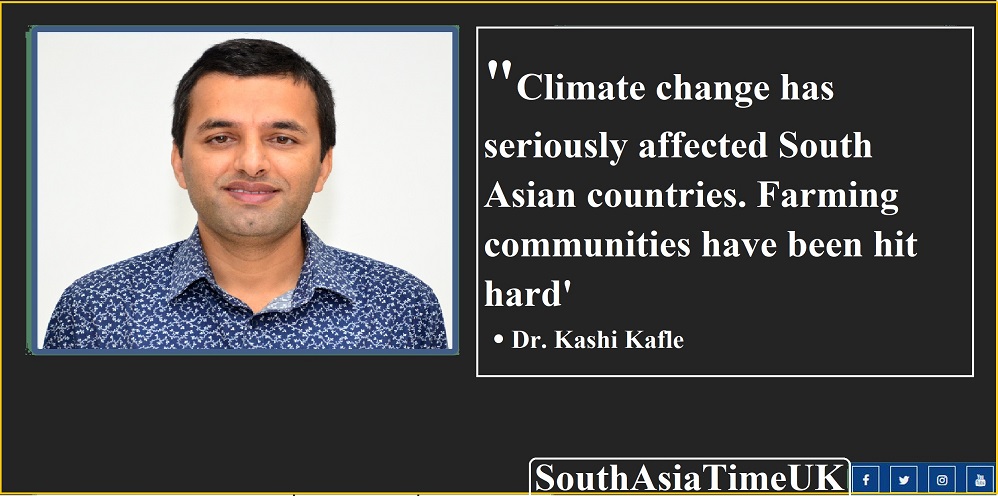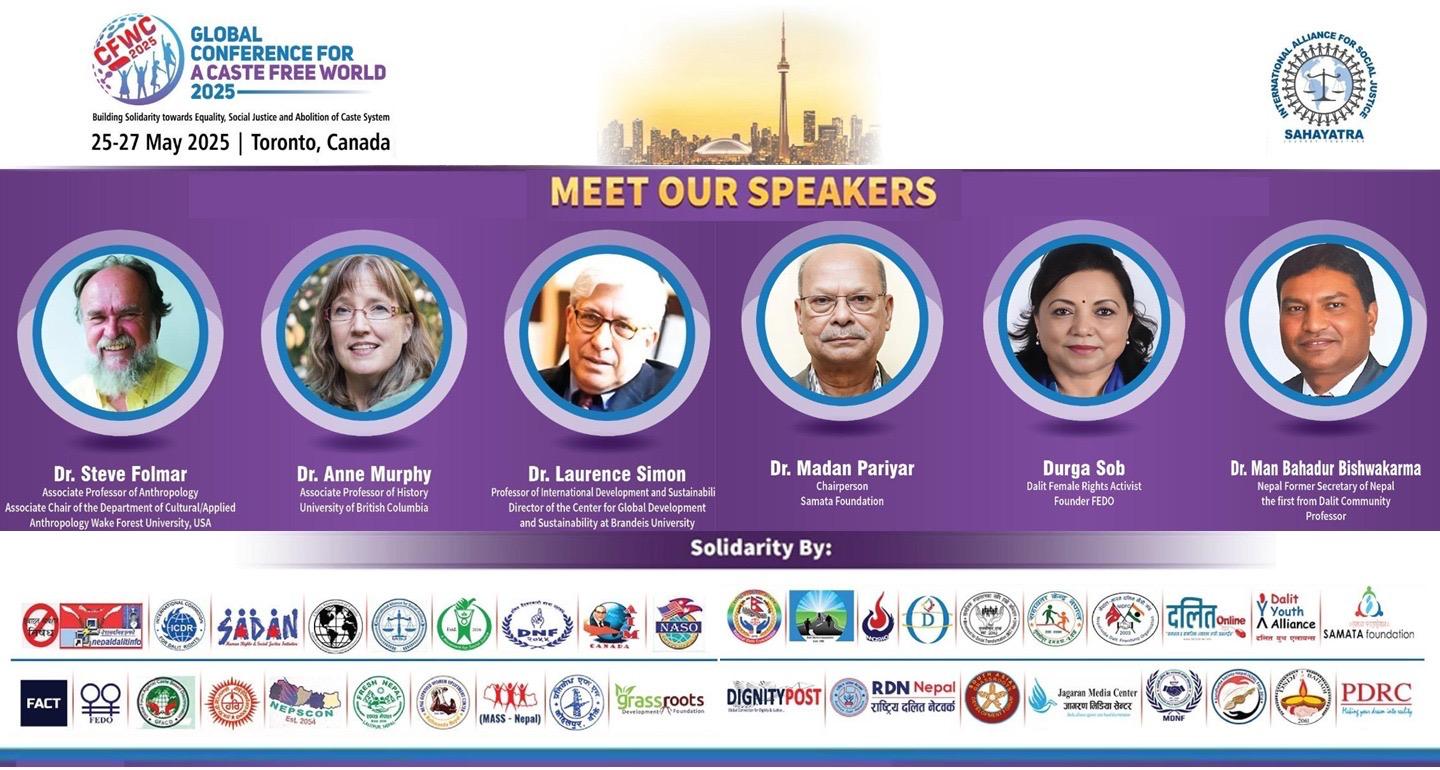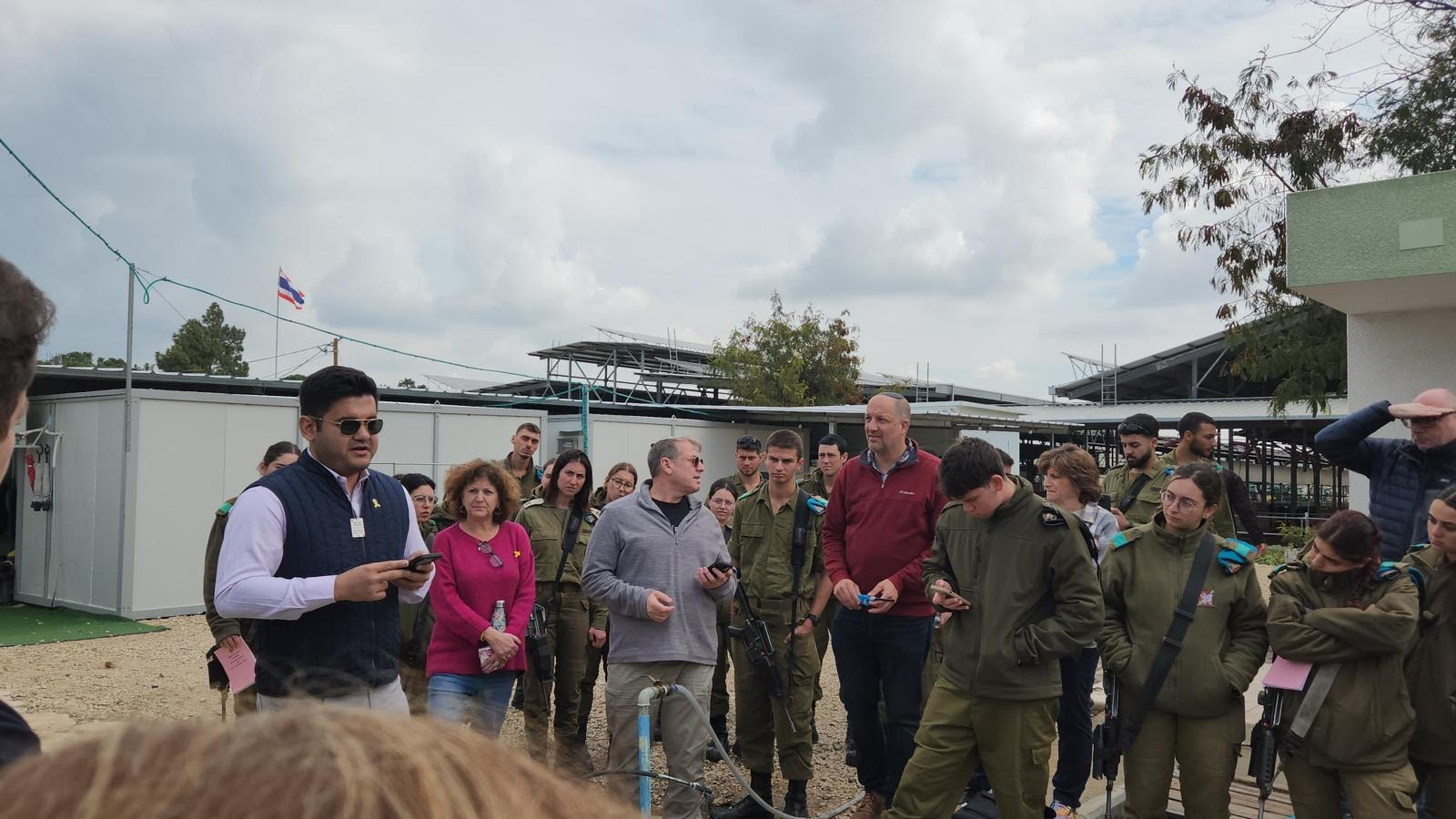‘In South Asia, marginal farmers are disproportionately affected by climate change’

DR KASHI KAFLE is an economist at the International Water Management Institute (IWMI) – a CGIAR research consortium based in Colombo, Sri Lanka. His research investigates the linkage between small-scale agriculture, irrigation, climate change, and poverty in South Asia, Middle East, and sub-Saharan Africa. Kashi holds a PhD in Agricultural Economics from the University of Illinois, USA, and previously worked with the World Bank and the International Fund for Agricultural Development (IFAD). Born in Kaski district, Nepal, he did his Masters in Agricultural Economics from the Louisiana State University, USA. He spoke to BHAGIRATH YOGI and DR JAGAN KARKI on issues related to the impact of climate change on water and food systems in South Asia and related issues. Excerpts of the interview:
What has been the impact of Covid-19 on people’s access to water and food systems in South Asia? What is IWMI doing to address this crisis?
Water is probably the only component of the food system that is absolutely critical from production through consumption. The competition for water between production (agricultural sector) and consumption (household or industrial use) has intensified with population growth and rapid urbanization in South Asia and elsewhere. The COVID-19 pandemic has aggravated the situation further by making vulnerable groups’ access to water and food more difficult. Transportation bottlenecks created by the COVID-19 lockdowns directly affected the food system by hindering transportation and marketing of agricultural products, reducing access to safe drinking water by disrupting water delivery by tankers, and interrupting the already fragile food distribution systems in the region.
Food systems also took a big indirect hit from COVID-19 through the loss of informal sector jobs such as street vendors, domestic workers, and casual wage labor. Besides, an unexpected influx of returnee migrants and abrupt drop in remittance flow also stressed the food systems by reducing household income and food affordability which further worsened food insecurity and poverty in the region. For example, a recent study in Bangladesh revealed a rise in poverty from 24% in 2019 to 35% in 2020. Both direct and indirect effects of COVID-19 disproportionally affected the poor, ethnic minorities, small-scale farmers, women farmers, and other vulnerable groups. For example, a UNDP study found that, in Nepal, more women (41%) than men (28.3%) lost their jobs due to COVID-19.
As a global non-profit research organization, IWMI’s work focuses on building resilience and ensuring safe and equitable access to water and food among the vulnerable communities and households, which are also disproportionately affected by COVID-19. IWMI’s work may not address the COVID-19 crisis directly, but we work with the governments and other stakeholders in finding ways to minimize the negative impacts of the crisis on small-scale farmers, women farmers, marginal communities, and other vulnerable groups through targeted public support. For example, in India and Bangladesh, IWMI researchers work with the Central and State Governments in disaster risk reduction and designing and scaling of risk insurance for small farmers. In Nepal, IWMI is collaborating with the federal ministries and local governments in designing targeted programs to ensure safe, timely, and sustainable access to water for irrigation, drinking, and sanitation.
How is climate change affecting the livelihoods of people in South Asia — from the Himalayas to those living in the Ganga basin? What needs to be done to address the issue of climate change?
Climate change has seriously affected South Asian countries. Rapidly melting Himalayas, frequent droughts and floods, landslides, rising sea level and sea intrusion, and frequent cyclones are some examples. Farming communities, especially those living in alluvial plains, have been hit hard by these events. In urban areas, residential and commercial properties plunge under flood in the rainy season. For example, Nepal saw more than 500 lives lost to extreme climate events such as floods, landslides etc. in 2020 alone. It is estimated that the country loses about 2-3% of national GDP (USD 540 million to USD 800 million) to extreme climate events every year. In India, it is estimated that extreme climate events were responsible for a whopping USD 63 billion loss over the last six decades. In 2020, a tropical cyclone – Amphan – claimed more than 100 lives, destroyed or damaged more than 20,000 homes, and affected hundreds of thousands of people costing an estimated USD 14 billion worth of economic loss. The situation is even worse in Bangladesh, Pakistan, and Sri Lanka where both floods and droughts have become commonplace. People living in coastal areas are highly vulnerable to extreme climate events due to rising sea levels and sea intrusion. Again, like COVID-19, climate change also has disproportionately affected the poor, small-scale farmers, women farmers, ethnic minorities etc.
As bad as this sounds, fortunately, there are ways to address these issues through targeted policies and timely action. By targeted policies, I mean clearly identifying different groups by their socio-economic, demographic, and cultural characteristics and designing the level of public support and policies accordingly. There is no ‘one size fits all’ approach. I would categorize the potential actions into two broad categories. The first approach is ‘climate change mitigation’ – i.e. minimizing the risk of climate disaster, and the second approach is ‘adaptation to climate change’ – i.e. minimizing the losses from climate disasters, should they happen. Since climate change has already started and some of that change is irreversible, governments should pursue adaptation measures. At the same time, governments should also pursue mitigation measures proactively, so that we can contribute to the global efforts of limiting greenhouse gas (GHG) emission and halting the global temperature rise to 2 degrees at max.
Hundreds of lives were lost this year in South Asia due to floods and landslides. As we are seeing a surge in climate-related disasters, what would you advise to the governments and local communities in South Asia to deal with climate-related disasters?
Governments can and should make the fight against climate change a top priority. Reducing the risk of climate-related disasters by policy shift and behavior change is important. The use of clean energy can help by reducing the probability of bad things happening. For example, switching to renewable energy sources such as solar power, reforestation, and adopting sustainable land-use practices such as mixing multiple crops or using minimum tillage can help reduce climate risk. IWMI has played an important role in this effort. For example, IWMI is leading a 4-year project on Solar Irrigation in South Asia (funded by the Swiss Agency for Development and Corporation). The project focuses in the capacity building of policymakers, water and agricultural professionals, and women and men farmers for sustainable use of groundwater by using clean energy (e.g. solar-powered pumps) instead of fossil fuels (e.g. diesel pumps). Solar pumps not only save the cost of irrigation but also help adapt to climate change as well as mitigate the risk of climate change by reducing GHG emissions.
It is equally important to minimize the loss from extreme climate events, especially for farming communities. Training farmers to alter their agricultural practices to cope with the changing climate can minimize the loss. In drought-affected areas, farmers can be provided with drought-tolerant crop varieties, training on irrigation scheduling, efficient irrigation technologies, or rainwater harvesting. In areas where floods are common, early warning systems can be put in place to minimize the damage by informing the residents well in advance. In the event of a disaster, targeted social protection measures such as food aid can provide immediate relief. Disaster insurance can be helpful as well. IWMI’s scientists have designed hi-tech satellite-based insurance, specifically targeted to farmers prone to extreme climate events. Over the last three years, the insurance product has been extensively used in India and Bangladesh to compensate farmers for crop loss from the flood. More than 7000 farming households received an average payout of 22 USD and tens of thousands of farmers are covered by the insurance.
Regional bodies like SAARC are slow to identify and address problems of access to water in the South Asia region. Do you see the need for alternative mechanisms involving local communities to address these problems?
Climate change is a global issue but we should not forget that the impacts of climate change are highly localized. As such, policy responses to these issues should be context-specific. Regional bodies like SAARC are a good venue for the exchange of information between countries in the region. Having an inter-governmental agency for exchanging information and periodic dialogue on issues related to climate change, drinking water, and irrigation may be helpful, but I do not see a need for another regional body for two reasons. First, multiple regional organizations are working on these issues already, such as South Asia Co-operative Environment Program (SACEP), South Asia Water Initiative (SAWI), and South Asia Water Governance Program (SAWGP).
Second, I do not think the lack of a regional governing body is the major problem. From what I understand, the major problem is poor design and implementation of water resources and agricultural policies and under-funded and under-capacitated subnational governments, including local governments. We need two things for this to change. First, a fundamental shift in program delivery from the current ‘top-down’ approach and centralized development thinking to what is called the ‘bottom-up’ approach and devolved development. Second, a well-trained and skilled workforce that has resources and skills to make things happen on the ground. I suggest South Asian governments seriously consider enhancing the capacity and capability of subnational governments, local governments, research institutions, and universities by investing in people – government workers, development workers, social mobilizers, teachers, students etc.
Access to clean and safe water and irrigation doesn’t seem to be high on the agenda of political leaders in South Asia. What do you think needs to be done to ensure that this issue gets a prominent place for planners as well as Ministers?
On the contrary, I do think access to safe drinking water and irrigation has received considerable policy attention in recent years, though the role of water for sustainable development has not been emphasized enough. The major shortfall, in my view, is around the institutional capacity for successful implementation and monitoring of these policies. Most policies around water and irrigation issues are poorly informed by science and evidence, often leading to implementation failure. More importantly, these programs focus on getting things out, but the real challenge is in getting things to the right people at right time – targeted and timely distribution.
The critical first step needed to avoid implementation failure is empowering local governments and using them to identify local problems and feed them back into regional and national level programs. Governments should invest in digital database that keeps track of beneficiaries, the level of support they are eligible for, and periodic progress on the programs. This can be done by upgrading and enhancing the capacity of existing extension offices. Both problem identification and targeting of public programs should take account of differences in ethnicity, socio-economic status, gender, demographic characteristics, and geography.
Second, both central and local governments should work closely with local and international research institutions working in the domain of water, irrigation, and climate change, such as IWMI. Establishing national think tanks that can bring the forefront of scientific knowledge about water and irrigation to policymakers and planners can be helpful too. And finally, to reiterate, I see a burning need for the governments to provide more support for research and innovation, especially in agriculture, food systems, water, and irrigation. In my view, most universities and research institutions are seriously underfunded in South Asia.
How can we resolve issues of transboundary water conflicts?
That’s a great question. Countries do have boundaries but water does not. The issue of transboundary water has been highly debated but less researched. I think water bodies such as rivers and oceans have been used strategically in the past and at present too. Potential conflicts that may arise from the strategic use of water bodies can hurt millions of people directly. Learning from some examples of transboundary water cooperation such as the Niger River Basin Authority in West Africa and the Nile Basin Initiative in Northeastern Africa, I think Asian countries can start a dialogue on ways to make the best and equitable use of the available water by the residents of all neighboring countries. I think cooperation on transboundary water is a prerequisite for stability, peace, and sustainable development in South Asia.

















Facebook Comments